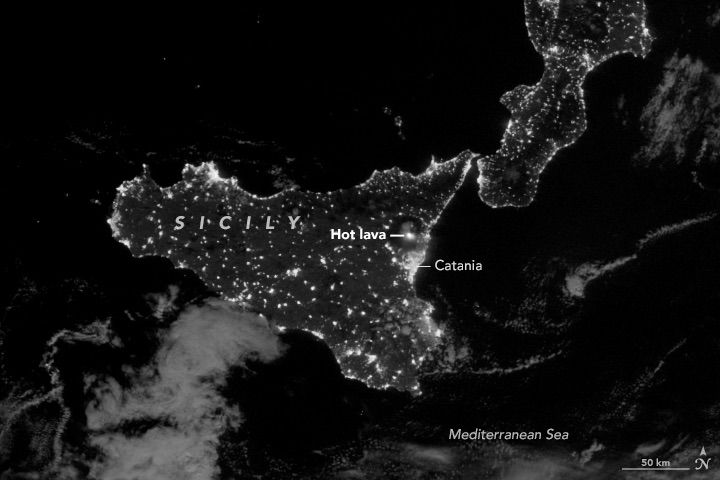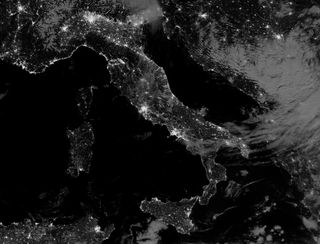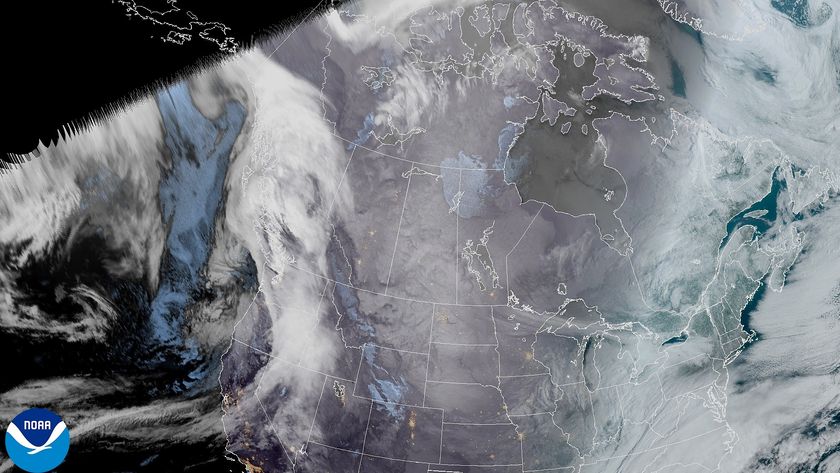Mount Etna Glows Hot in New Satellite Image

Sicily sparkles with city lights in a new satellite image, but what's that lighting up Mount Etna?
Hot lava.
A new image taken by an instrument on the Suomi NPP satellite shows the nighttime glow of lava during a recent active period at the volcano, which towers 10,922 feet (3,329 meters) over the island. Mount Etna has been belching ash and lava in the past few weeks. On March 16, 10 people were injured in an explosion of hot rock on the mountain, an incident captured by a BBC film crew.
This level of activity is normal for Mount Etna, though. The volcano has been active for at least half a million years, and there is a longer record of its activity than any other volcano on earth. Greek historian Diodorus Siculus wrote of it erupting in 425 B.C. It's mentioned in the epic poem "Aeneid."

One of Etna's frequent victims is visible in the new satellite image that was published by NASA's Earth Observatory. The city of Catania, visible as the bright spot on the coast just south of the mountain, has been destroyed or partially destroyed by lava from Mount Etna in 122 B.C., A.D. 40, A.D. 1169, A.D. 1185 and in A.D. 1669. In 1992, lava flows threatened the nearby city of Zafferana. U.S. Marines were sent to help drop concrete blocks from helicopters to redirect the lava flow away from the city.
The instrument on the Suomi satellite that captured this lights-only view of the volcano and Sicily is the Visible Infrared Imaging Radiometer Suite (VIIRS). The instrument can detect multiple wavelengths of light, which can then be filtered to pick up only particular sources — in this case, city lights at 2:30 a.m. local time and the persistent glow of molten rock.
Original article on Live Science.
Sign up for the Live Science daily newsletter now
Get the world’s most fascinating discoveries delivered straight to your inbox.

Stephanie Pappas is a contributing writer for Live Science, covering topics ranging from geoscience to archaeology to the human brain and behavior. She was previously a senior writer for Live Science but is now a freelancer based in Denver, Colorado, and regularly contributes to Scientific American and The Monitor, the monthly magazine of the American Psychological Association. Stephanie received a bachelor's degree in psychology from the University of South Carolina and a graduate certificate in science communication from the University of California, Santa Cruz.
Most Popular




